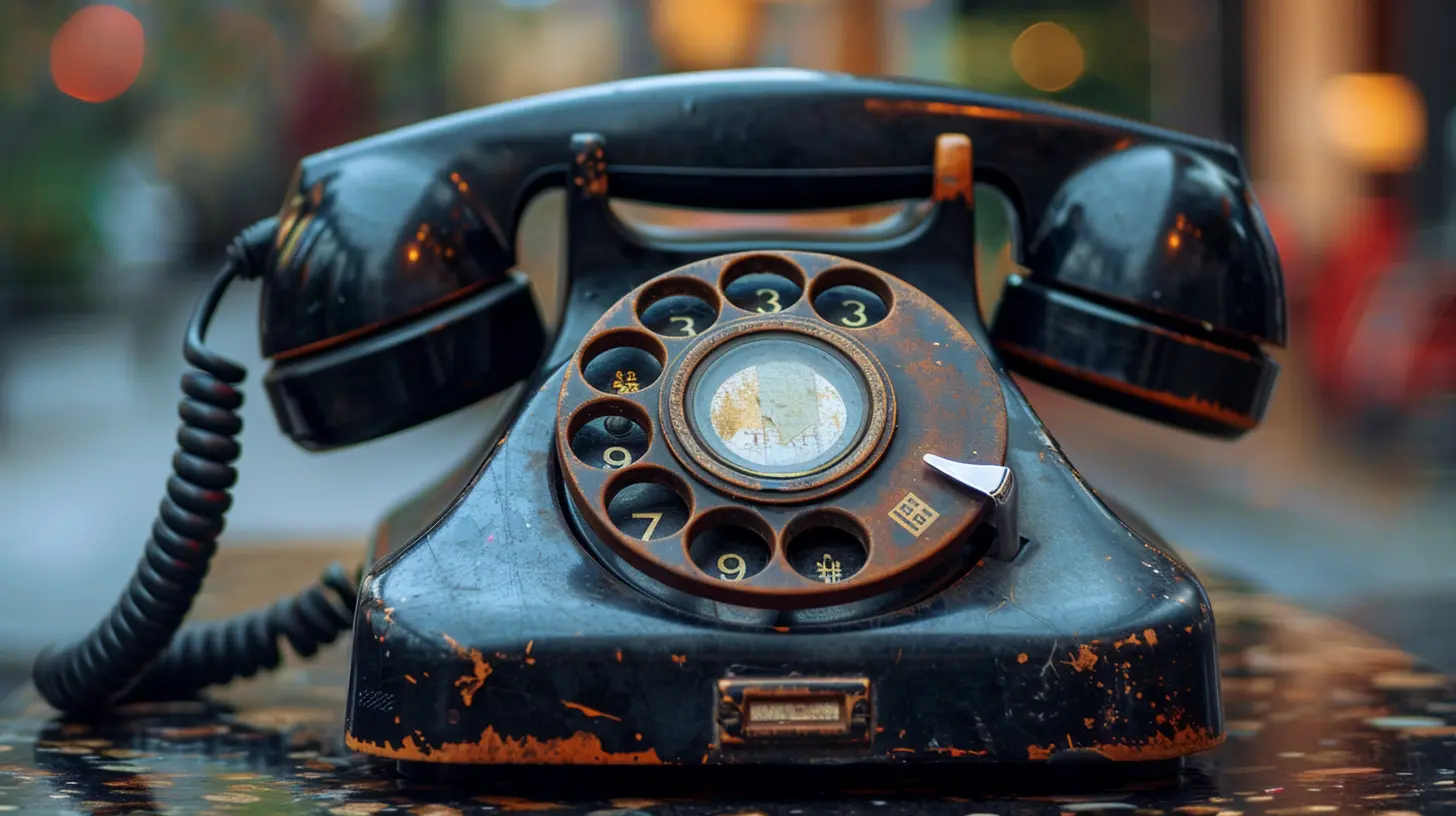The Importance of Tone and Language in Customer Interactions
14 July 2025
When was the last time you reached out to a business and walked away feeling truly heard and respected? Chances are, it wasn't just about the solution they offered—it had everything to do with how they said it. That’s right. The tone and language used in customer interactions can either build a bridge or burn one.
In today’s hyper-connected world, your words are doing a whole lot more than just communicating information—they’re shaping your brand, setting the mood, and defining your customer relationships. Let's dive deep into why tone and language aren't just “nice-to-have” but essential pieces of your business strategy.
Why Tone and Language Matter More Than Ever
Let’s cut to the chase: customers remember how you made them feel more than what you said. So when a customer gets a response that feels cold, robotic, or indifferent—even if it's technically correct—it sticks in the wrong way.Tone and language aren't just about being polite. They’re about connection. They convey trust, empathy, and understanding. And in a world where online reviews can make or break your reputation, getting your tone right isn’t optional—it’s vital.
The Difference Between Saying and Meaning
You can say the exact same thing in ten different ways—and get ten very different reactions. Want an example? Sure.- “That’s our policy.”
- “I’m really sorry, but here’s what we can do instead.”
Both may communicate a limitation, but only one shows empathy and offers a lifeline. Your tone acts like the wrapping paper around your message. Wrap bad news in kindness, and it becomes easier to accept. Wrap it in cold detachment? Good luck.
Tone Is the Voice of Your Brand
Think of your tone as your business’s personality. Is it friendly? Professional? Playful? Serious? Whatever it is, consistency is key.Imagine you’re chatting with a brand that’s super casual on Twitter but sends formal, stiff emails. Confusing, right? That mismatch creates friction. When customers “hear” your brand, the voice should always sound familiar and aligned—like a trusted friend who’s always on the same wavelength.
Finding Your Brand’s Voice
Here are a few questions to help you shape your tone:- If your brand were a person, how would they talk?
- How do you want customers to feel after interacting with you?
- What industry are you in, and what kind of tone do your competitors use?
The Power of Positive Language
Let’s talk about words. Not just any words, but the kind that lift people up rather than shut them down. Positive language can transform a tricky customer service interaction into a smooth, even delightful, experience.Phrases That Uplift
Bad: “I can’t help with that.”Better: “Let me find someone who can help you.”
Bad: “You misunderstood.”
Better: “Let me clarify that for you.”
Do you see the difference? The first type shuts the door; the second one opens it.
Empathy: The Secret Sauce
Ever heard the saying, “People don’t care how much you know until they know how much you care?” That sums up the role empathy plays in customer interactions.When a customer is upset, they’re not just looking for a fix—they want to feel understood. A simple acknowledgment like, “I can totally understand how that must feel,” can flip the whole conversation.
Empathy builds trust. It tells your customer, “Hey, I get you. I’m on your side.” And that makes all the difference.
Tone in Written Communication (Because It’s Tricky)
Here’s a fun challenge: try conveying warmth and friendliness without facial expressions, body language, or vocal tone. Welcome to the world of emails, chats, and DMs.Tone in writing can be tricky. Without physical cues, your words have to do all the heavy lifting. That’s why you need to be intentional about your phrasing.
Tips for a Friendly Written Tone
- Use contractions (“I’m” instead of “I am”) for a more natural feel.- Sprinkle in polite words like “please” and “thank you.”
- Don’t be afraid of emojis—used sparingly, they can bring in that human touch.
- Read it out loud before sending. If it sounds robotic, revise.
Tone in Verbal Communication
When you’re face-to-face or on the phone, your tone matters just as much—if not more—than your actual words.The key? Balance. You want to be professional, but not stiff. Friendly, but not over-familiar. Confident, but not dismissive.
Voice Matters
Your pitch, speed, and volume all send messages. A rushed tone feels careless. A calm and steady tone says, “You can trust me.” Smiling while you talk? Yes, people can hear that. It works wonders.Cultural Sensitivity and Language
In our global marketplace, you’re often talking to people from different cultural backgrounds. That’s where language and tone need a little extra care.Idioms, sarcasm, or even jokes can fall flat—or worse, offend. The goal is always clarity and respect. When in doubt, go for simple, kind language that’s easy to understand and hard to misinterpret.
Training Your Team for Tone Excellence
You can’t just hope your team “picks up” the right tone. You’ve got to teach it.Start with These:
- Role-Playing Exercises: Let your team walk through tricky conversations and get immediate feedback.- Tone Guidelines: Create a tone-of-voice guide tailored to your brand.
- Feedback Loops: Review real interactions and highlight wins and areas to improve.
Investing in tone training isn’t fluffy—it’s foundational. Because behind every interaction is a chance to earn trust or lose it.
Tuning In: Listening Is Half the Battle
You can’t strike the right tone if you’re not tuned in to what the customer is feeling. That means listening—not just to the words, but to the mood behind them.Are they frustrated? Confused? Excited? Bored? Match your tone to theirs, and you’ll create harmony. Miss the mark, and even your best intentions can come off wrong.
The Ripple Effect of Kind Language
Here’s the beauty of getting your tone and language right: it doesn’t just help one customer. It sets off a chain reaction of goodwill.Happy customers tell others. They write positive reviews. They come back. And they treat your team with the same respect and kindness you showed them.
It’s a win-win cycle. And tone is what sets it in motion.
What Happens When You Get It Wrong?
Let’s be real—no one’s perfect. But mishandling tone and language can have serious consequences.- Negative reviews
- Lost customers
- Damaged reputation
And worst of all? Word spreads. Fast.
That’s why it’s so important to keep monitoring, training, and improving. One careless email or poorly handled call can undo months of good work.
The Human Touch Wins Every Time
At the end of the day, your customers don’t want to talk to a business—they want to talk to a person. Someone who gets them. Someone who cares.That's why tone and language are more than communication tools. They’re your handshake, your smile, your warm hug, and your way of saying, “You matter to us.”
So, go the extra mile. Adjust that email. Rephrase that sentence. Smile when you speak. Because every little touchpoint counts.
Final Thoughts: Speak to Connect, Not Just to Communicate
Communication is about more than just transferring information—it’s about connection. Tone and language are the heartbeats of that connection.So next time you’re talking to a customer—through text, call, or email—ask yourself:
- Am I making them feel valued?
- Is my tone aligned with how I’d want to be spoken to?
- Would I be happy receiving this message?
If the answer is yes, you're on the right track. Keep that tone warm, that language clear, and your empathy front and center. Your customers will thank you—not just with words, but with loyalty.
all images in this post were generated using AI tools
Category:
Customer ServiceAuthor:

Rosa Gilbert
Discussion
rate this article
1 comments
Zeke McCarthy
Using the right tone is like seasoning a dish—too bland, and customers might leave hungry; too spicy, and they might be overwhelmed! Sprinkle in some empathy for the perfect flavor!
July 24, 2025 at 4:27 AM

Rosa Gilbert
Absolutely! Striking the right balance in tone is essential for creating positive customer experiences. Empathy truly adds that perfect touch!


